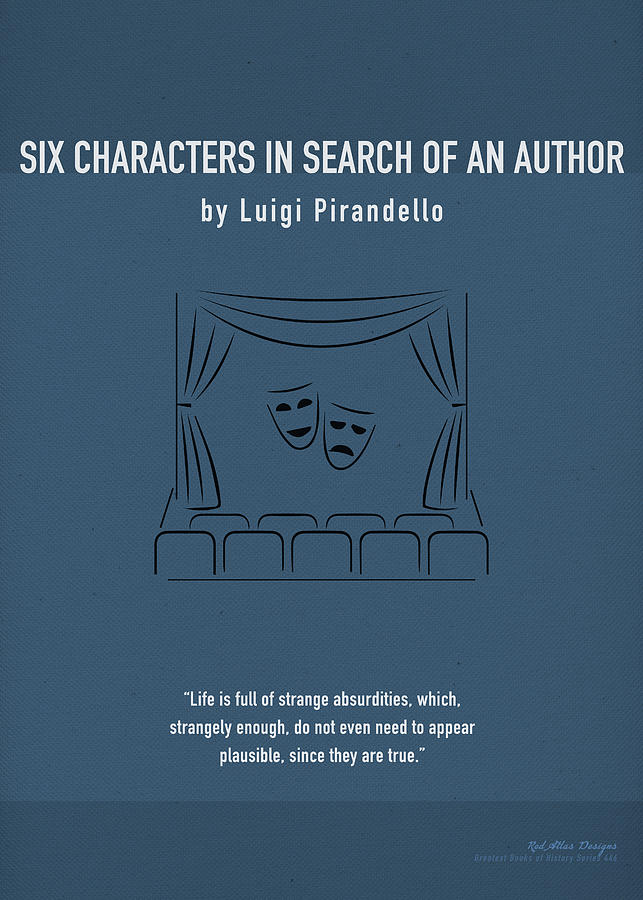

And so let them go where dramatic characters do go to have life: on a stage.

“Why not,” I said to myself, “present this highly strange fact of an author who refuses to let some of his characters live though they have been born in his fantasy, and the fact that these characters, having by now life in their veins, do not resign themselves to remaining excluded from the world of art? They are detached from me live on their own have acquired voice and movement have by themselves-in this struggle for existence that they have had to wage with me-become dramatic characters, characters that can move and talk on their own initiative already see themselves as such have learned to defend themselves against others. These theories clearly inform Six Characters in Search of an Author.Analysis of Luigi Pirandello’s Six Characters in Search of an Author Pirandello was interested in the theories of Stanislavsky, whose method of psychological immersion (similar to, but distinct from, so-called ‘method acting’) was becoming popular in Europe at the time (Stanislavsky had been involved in some of Chekhov’s productions at the end of the nineteenth century).Īctors should spend a long time ‘becoming’ the part they are playing, through training their brains in certain ways of thinking and responding.

The Stepdaughter, who has ‘lived’ the reality of her character, tells the actors and director that the actor playing the Father cannot possibly bring to life the true anguish the Father felt when he found himself in the arms of a woman who, when she had been a little girl, he had doted on as his own. This point comes home during the scene in the ‘hat shop’, where the actors are tasked with acting out the scene in which the Mother discovers the Father and Stepdaughter about to be … caught in an intimate embrace. But when they find their Director – and the Father is convinced the Director is the one who can bring their story to life – this Director finds his whole understanding of theatre thrown into doubt as the Six Characters force him to confront some difficult questions.įor instance, to whom does a story or a scene ‘belong’? The author of the play? The director who brings it to life on the stage? The actors who ‘interpret’ the part? Or, if the play is based on real-life events, does it truly belong to the people who lived through the events the play dramatises? They are, after all, really six characters in search of a director.

What they need, however, is someone to realise that story for them on the stage. As Michael Patterson observes in his The Oxford Guide to Plays (Oxford Quick Reference), even the title of Pirandello’s play is a piece of sleight-of-hand: these ‘Six Characters in Search of an Author’ have already found their author – he’s the one who created them – and they already have their story.


 0 kommentar(er)
0 kommentar(er)
